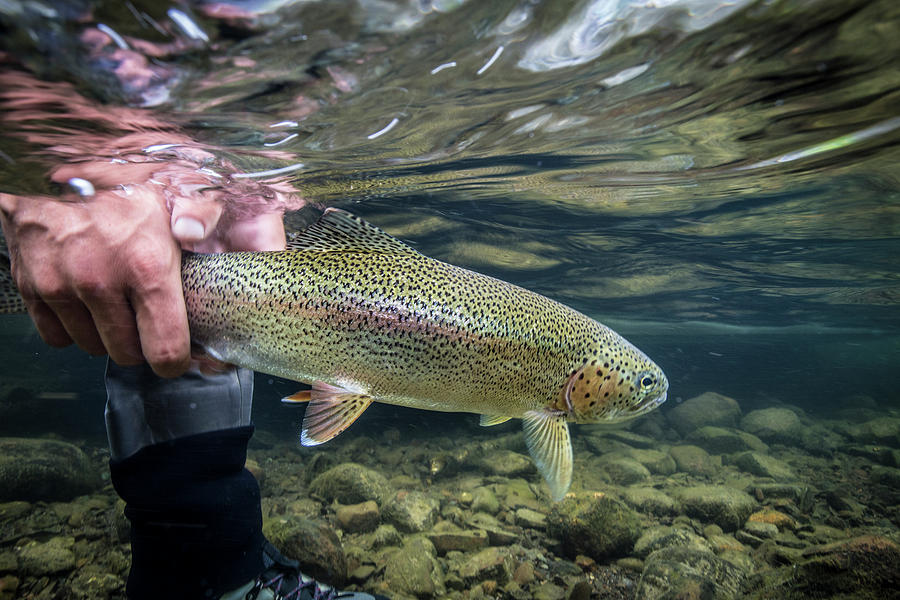

Rainbow trout grow best in the water temperature range from 55 ' to 68 ' F, but can not survive prolonged periods of temperatures above 70' F. With experience you may be able to exceed the recommended number of fish per acre, especially in a larger pond over five acres or in a pond that has a constant flow of water through it. It is a good idea to stay conservative on your first venture into fish culture, especially if you are working with a small pond which is more likely to have dissolved oxygen problems. The maximum safe pond limit is about 1,200 fish per acre. The upper cage limit for trout is generally considered to be a maximum of 15 fish per cubic foot which is 405 fish per cubic yard or 523 fish per cubic meter.

There are two limits on the number of fish that can be raised in a cage culture system. Smaller fish can be purchased at a cheaper rate if a smaller harvest sized trout is acceptable to you or your customers. These fish will cost from about 35 to 45 cents per fish including delivery. It is best to stock about seven inch fingerlings weighing about three ounces each in order to obtain nice harvestable size fish weighing from one-half to three-quarters of a pound at spring harvest time. A partial list of rainbow trout suppliers is included at the end of this fact sheet. Prices vary considerably between suppliers so it is wise to shop around for the overall best buy and delivery price. If a group of fish farmers is able to combine orders, it is usually more convenient and economical to have the fish delivered. The closest suppliers of rainbow trout for most places in the state are located in southwest Missouri, northeastern Arkansas, or southern Kansas. If this occurs, a quick cleaning with a push broom should correct the situation. Occasionally algae ("moss") may build up on the cage and restrict water flow.
RAINBOW TROUT FREE
The free flow of water through the cage is vital to the health and growth of the fish. Cage construction is discussed extensively in the booklet, "Small-Scale Caged Fish Culture in Oklahoma Farm Ponds," available from Langston University. Any pond that has had a fish kill in the past should probably not be used for trout culture.Ĭages may be made or purchased from commercial sup- pliers. This double cropping system increases the economic potential of caged fish culture by allowing double the use of the pond, cages, and other fish culture equipment.Īny pond over I acre in size and deeper than 8 feet will probably be suitable for winter production of rainbow trout unless it is very muddy or contains a large amount of organic matter such as cattle waste or aquatic vegetation which can decay and use up the dissolved oxygen in the water. Therefore, rainbow trout can be stocked into the cages in late October when the channel catfish are harvested and the trout can be harvested in late April when it is time to stock channel catfish back in the cages. Rainbow trout survive and grow well in a caged fish culture system since they adapt well to crowded conditions and readily eat a processed feed.Ī system of growing channel catfish in the summer and rainbow trout in the winter works well since the approximate growing season for channel catfish is May through October. Most ponds and lakes can not be drained or completely seined to insure a total harvest of the trout. The reason for growing the trout in cages is to allow for the complete harvest of fish in the spring when the water temperature rises above their tolerance level. Rainbow trout can he grown in cages from a large fingerling size to a harvestable fish during this time period in many suitable Oklahoma farm ponds.

Consequently, rainbow trout can only live in most Oklahoma waters from late October to early May. Rainbow trout are cold water fish which can not survive when the water temperature rises above 70 degrees Fahrenheit for an extended period of time.


 0 kommentar(er)
0 kommentar(er)
